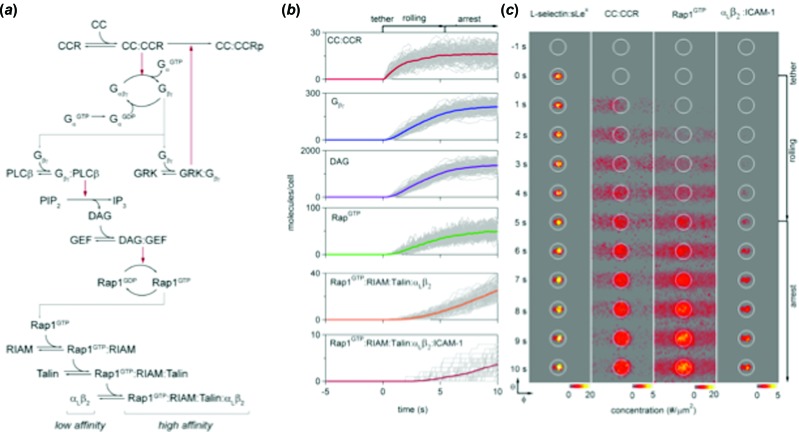Fig. 5.
Integrated adhesive dynamics (ISAD) for the simulation of T-cell adhesion under flow. Panel (a) shows the reaction pathways that are simulated as a part of ISAD, starting with the chemokine and ending at the activation of the integrin into a high strength state. Panel (b) shows the progressive accumulation of each important molecule, starting from the chemokine and culminating in the ligation of Rap1 at the integrin. Panel (c) shows the spatio-temporal dynamics of molecular engagement from adhesion molecules to signaling molecules in the vicinity of the contact zone (the circle) during the progressive activation of the cell. Image taken from Ref. [32] with permission of the American Chemical Society.

